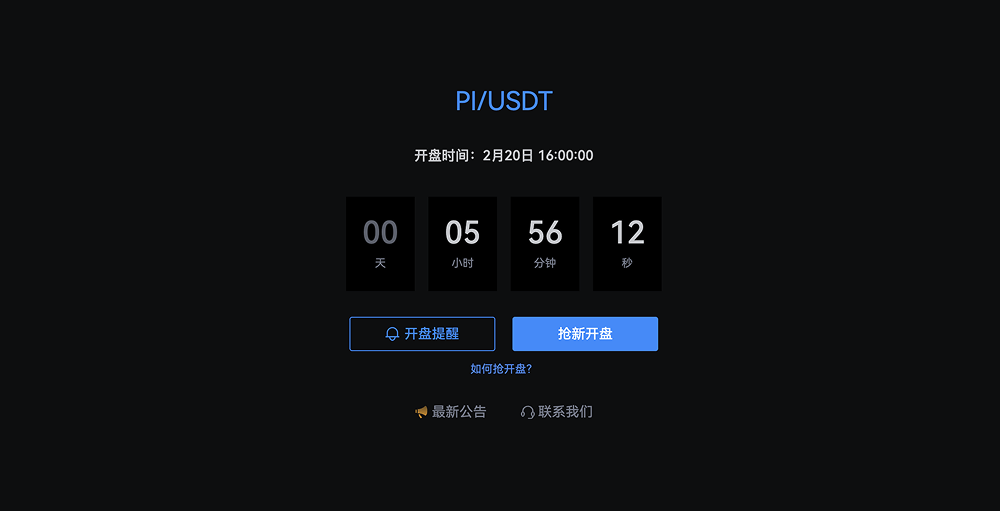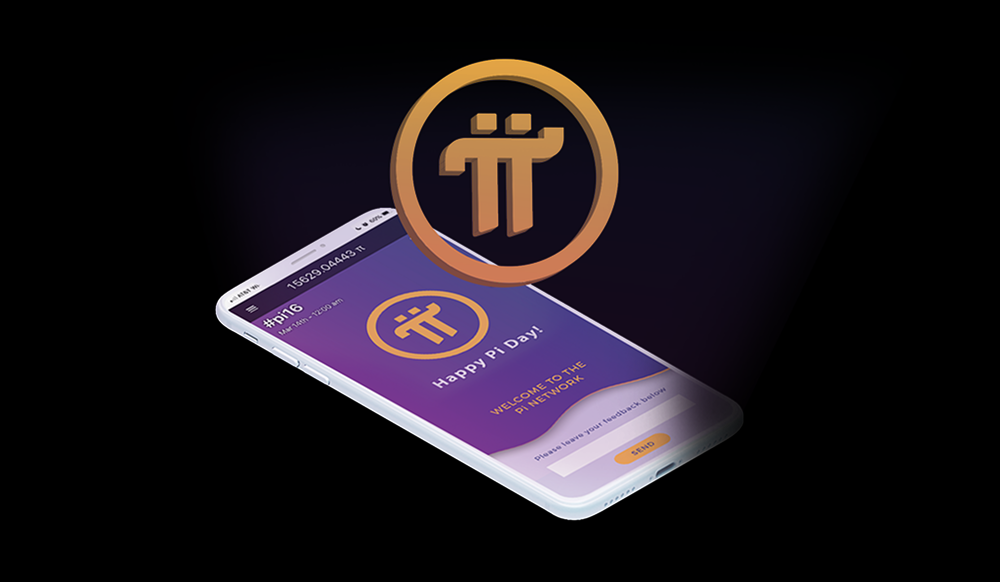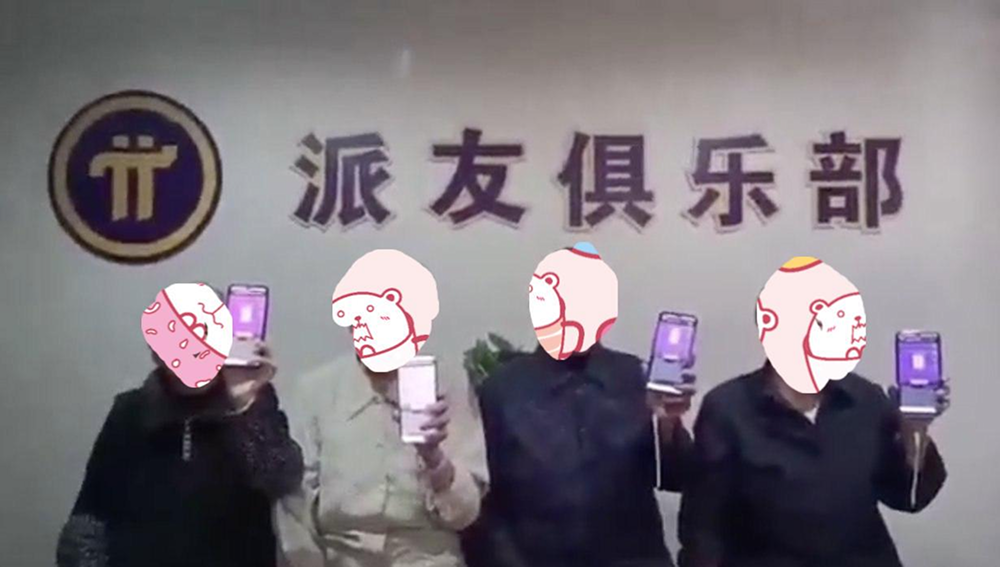The highly anticipated PI coin is about to be listed on exchanges, but on social media and professional forums, PI coin is often accompanied by the label of "pyramid scheme coin." This article will conduct an in-depth analysis from multiple perspectives on why PI coin is referred to as a pyramid scheme coin, exploring issues related to its business model, user growth mechanism, technical architecture, and regulatory challenges, aiming to present readers with a comprehensive and multi-layered analytical perspective.

1. Background and Current Development of PI Coin
PI Network was launched in 2019 with the intention of creating a digital currency that allows users to easily "mine" on their mobile phones, lowering the barrier for ordinary users to participate in the blockchain economy. The project promotes "mining for everyone," claiming that users can "mine" PI coins simply by clicking on a mobile app, without the need for expensive equipment or significant electricity consumption. This model quickly attracted a large number of ordinary users, forming a vast pioneer user base.
However, despite the surge in user numbers, PI Network has remained in a testing or pre-launch state, with the mainnet yet to officially open for trading. Many users, after a long wait, found that the PI coins they obtained could only be used for "scoring" or "proving" identity within the platform, and could not be freely traded on mainstream exchanges. As a result, combined with the project's unique design in user growth models, PI coin has gradually been questioned by the outside world as a "pyramid scheme coin" or a variant of a "Ponzi scheme."

2. Main Reasons for Pyramid Scheme Doubts
1. Invitation System and "Recruitment" Mechanism
PI Network employs an invitation system, meaning that users can only join the system through recommendations from existing users. Inviting new users not only expands the user base but also directly increases the "mining speed" for both the inviter and the invitee. This mechanism achieved significant user growth in the early stages but also raised many concerns from the outside:
- Profit Transmission Chain: In this model, the inviter receives more mining rewards as the number of users increases, which inadvertently forms a pyramid-like profit distribution structure. Although the project does not set an entry fee or direct monetary transfers, the design of the reward mechanism easily evokes associations with "recruitment" profit-making methods typical of pyramid schemes.
- Unequal User Value: In the invitation chain, early users often receive higher mining rewards, while later users are at a disadvantage. This "the rich get richer" model bears similarities to the "high rebate" model in traditional pyramid schemes, leading some to question the fairness of its business model.
2. Internal Circulation and Delayed Mainnet
Since the project's launch, PI coins have remained within a closed ecosystem, where users can only "accumulate" tokens within the app and cannot engage in actual market trading. The delay in launching the mainnet and establishing a price discovery mechanism has left the "digital assets" in users' hands lacking real market value:
- Non-redeemable Digital Assets: Due to the lack of free circulation channels, the PI coins held by users for a long time remain in digital wallets and have not been converted into real assets. This situation has led many investors to worry that the project's true purpose may not be to create an open digital economic system, but rather to use user growth to inflate asset values.
- Discrepancy Between Promises and Actual Progress: The project team has repeatedly promoted that "the mainnet will be launched soon," but delays have been frequent, leading the outside world to generally believe that the project lacks the ability to implement its plans and relies more on continuously expanding the user base to maintain interest.
3. Lack of Transparency in Economic Model
Compared to mainstream cryptocurrencies like Bitcoin and Ethereum, the economic model of PI coin appears particularly vague:
- Unclear Supply and Distribution Mechanism: Although the project team has mentioned the total supply and distribution rules of PI coins, in reality, the reward mechanism and subsequent economic incentive plans have frequently changed, making it difficult for outsiders to accurately predict the rationality of value changes.
- Risks of "Zero-Cost" Mining Model: The "mining" of PI coins does not rely on traditional computational power competition but is achieved through users activating their accounts by clicking daily. This model essentially lowers the participation threshold but also raises questions about the scarcity and security behind the coin's value.
4. Marketing and Speculation as a Double-Edged Sword
During its promotion, PI Network quickly gathered a large number of users through social media and word-of-mouth, but this also included elements of excessive speculation:
- Exaggerated Promotional Prospects: In the early promotional phase, slogans like "the next Bitcoin" and "mining for everyone" frequently appeared, attracting many ordinary investors with dreams of blockchain. However, the reality is that the success of blockchain projects requires strong technical support and practical application scenarios, not just marketing slogans.
- Prevalence of Speculative Behavior: In the absence of a formally launched mainnet and redeemable assets, some users and speculators still harbor fantasies of "getting rich overnight," leading to a market filled with short-term speculation and trend-following behavior. This phenomenon is also common in pyramid schemes, further intensifying doubts about the essence of PI coin.

3. Multi-Angle Analysis: Internal and External Factors of Pyramid Scheme Doubts
Internal Mechanism Perspective
From the perspective of internal project design, PI Network's user growth strategy and reward mechanism are undoubtedly a double-edged sword. On one hand, it leverages the social network effect to rapidly expand its user base; on the other hand, this mechanism makes the project resemble a social fission platform rather than a pure blockchain economic system. Its "recruitment" style reward model may lead to excessive profits for early users while causing significant losses for later users in the face of market fluctuations. Additionally, the project's long-term closed ecosystem has resulted in a lack of real market support for the coin's value, further undermining its intrinsic worth.
Market and Investor Perspective
For ordinary investors, PI coin offers a low-threshold way to participate in the digital economy, but the accompanying risks cannot be ignored:
- Information Asymmetry and Insufficient Risk Awareness: Most ordinary users do not understand the underlying blockchain technology and economic models, lacking sufficient awareness of the complexities behind the project. Faced with rapidly growing user rewards, investors may overlook the potential systemic risks of the project.
- Market Manipulation and Speculative Risks: In the absence of a transparent pricing mechanism, PI coin is susceptible to manipulation and speculation. Some early holders may quickly cash out after the mainnet launch, potentially triggering a price crash and causing significant financial losses for many ordinary users.
Technical and Regulatory Perspective
From a technical and regulatory standpoint, the current situation of PI Network is also concerning:
- Controversies Over Technical Security and Consensus Mechanism: Traditional blockchains rely on computational power or proof of stake to ensure network security, while the "social mining" model adopted by PI coin lacks a recognized security consensus mechanism, which may expose the entire network to vulnerabilities in the event of an attack.
- Compliance and Regulatory Challenges: Regulatory attitudes toward digital currencies are becoming increasingly strict in various countries. Due to issues such as the long-term closed ecosystem, user data collection, and reward mechanisms, PI coin is likely to face more stringent regulatory scrutiny. The risks associated with pyramid schemes are more likely to attract regulatory attention, potentially leading to legal risks for the project in future operations.
4. Can Listing on Exchanges Break the Controversy of "Pyramid Scheme Coin"?
The listing of PI coin on exchanges does not equate to completely dispelling the controversy; the root of its "pyramid scheme" doubts lies in its business model, not in trading channels. Although listing on exchanges can enhance liquidity, increase visibility, and to some extent boost market recognition, it cannot entirely eliminate external doubts. The past issues of PI Network, such as the invitation system for user acquisition, long-term opacity of the mainnet, and unclear economic model, are the core reasons for being criticized as a "pyramid scheme coin." If the mainnet is still not genuinely open and the economic model lacks stable support, merely listing on exchanges cannot prove its value. What truly determines whether PI coin can escape controversy is the realization of a decentralized mainnet, the transparency and stability of the economic system, the development of practical application scenarios, and compliant operations; otherwise, even entering the trading market will struggle to gain genuine trust.
In summary, PI coin is easily associated with pyramid scheme models due to its unique user growth mechanism, closed ecosystem, and continuously delayed mainnet launch, leading some market participants to label it as a "pyramid scheme coin." Whether PI Network can overcome doubts through technological upgrades and ecosystem development in the future, the numerous issues exposed by the current project serve as a warning in the digital currency field—while pursuing innovation and popularization, how to balance risks and maintain transparent and open operational mechanisms is key to achieving long-term development.
Disclaimer: The above content does not constitute investment advice.
AiCoin Official Website: www.aicoin.com
Telegram: t.me/aicoincn
Twitter: x.com/AiCoinzh
Email: support@aicoin.com
Group Chat: Customer Service Yingying、Customer Service KK
免责声明:本文章仅代表作者个人观点,不代表本平台的立场和观点。本文章仅供信息分享,不构成对任何人的任何投资建议。用户与作者之间的任何争议,与本平台无关。如网页中刊载的文章或图片涉及侵权,请提供相关的权利证明和身份证明发送邮件到support@aicoin.com,本平台相关工作人员将会进行核查。




